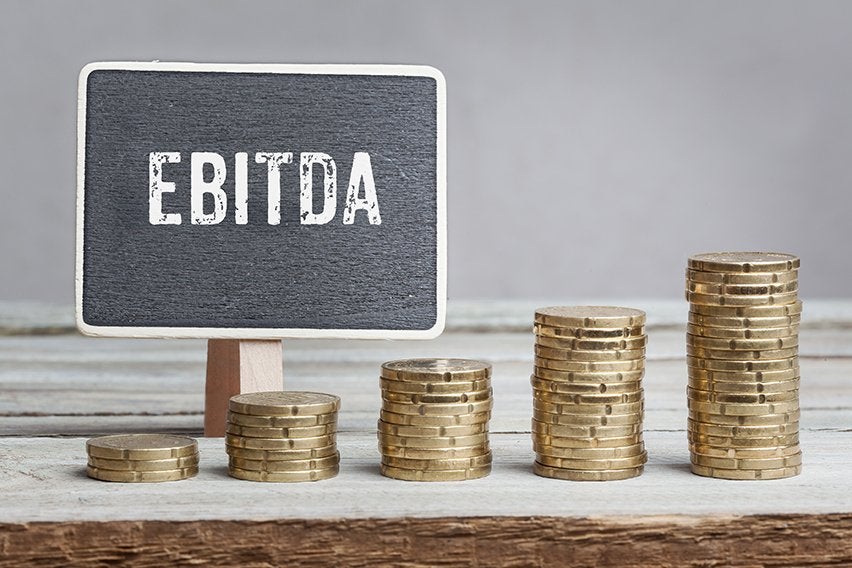What Is an EBITDA Margin? Definition, Formula & Examples

The financial condition of a company shows its current situation and whether or not it will still be around in the future. Several factors affect a business’ financial condition. These include management, debts, sales activity, operating environment, working income, and net income.
Generally, the EBITDA Margin is used to assess a company’s financial health. Here’s a closer look at what it is and how it’s calculated.
In this article, we’ll cover everything you need to know about EBITDA margin. The info we’ll cover includes the formula, benefits, disadvantages, and alternatives. Keep reading to find out more!
Here’s What We’ll Cover:
What Is the Formula for EBITDA Margin?
Benefits of EBITDA Margin in Determining Business Profitability
Is EBITDA Margin Similar to the Operating Margin?
Highest EBITDA Margin Industries
What Is EBITDA Margin?
The EBITDA margin represents a company’s operating profit as a percentage of its revenue. EBITDA stands for Earnings Before Interest, Taxes, Depreciation, and Amortization.
It strips away the factors that can affect your operational profitability. This lets investors or business owners compare your company against similar businesses.
Standard measures of profitability, such as net income, are often replaced by EBITDA margins. According to supporters, EBITDA margins provide a more accurate reflection of financial performance.

What Is the Formula for EBITDA Margin?
To determine a company’s profitability, the EBITDA margin is divided by the total revenue.
To calculate EBITDA, take sales revenue and subtract operating expenses. Operating expenses include selling, marketing, and administrative costs, excluding depreciation and amortization.
Operating Income (EBIT) + Depreciation + Amortization = EBITDA
Using the following formula, you can determine the EBITDA margin.
It is calculated as follows: EBITDA / Revenue
Capital structure, non-cash expenses, and income taxes are not considered in the margin.
A company with revenue totaling $500,000 and EBITDA totaling $50,000 would have a 10% EBITDA margin because $50,000 divided by $500,000 = 10%.
When the EBITDA margin is higher, a company’s operating expenses are smaller in relation to total revenue. This results in more profitability.
Example Calculation 1
In 2015, LMN company generated a net profit of $3M before taxes and interest. The income statement indicated revenues of $5M. There was $100,000 in depreciation and amortization.
According to these figures, the EBITDA margin is 62%. This means that the remaining 38% of sales revenue represents operating expenses. These figures exclude depreciation and amortization.
By increasing the EBITDA margin, a company’s operating expenses as a proportion of its total revenue are reduced. This allows the business to increase its bottom line and results in higher profits.
Example Calculation 2
Let’s take a look at Starbucks’ EBITDA margin (SBUX) to understand how it works.
In fact, EBITDA (operating income) is equal to $4,171.9 plus $1,011.4 (depreciation and amortization). Divide the EBITDA by the total revenues, which in 2017 are $22,386.8 million, to find the EBITDA margin.
As of 2017, Starbucks had an EBITDA margin of 5,146.1/22,386.8 = 22.98%.
Alternatives to EBITDA Margin
Analysts and investors use EBITDA to understand a company’s profitability. However, some use a couple of alternatives to EBITDA:
- EBITA: Earnings before interest, taxes, and amortization
- EBIT: Earnings before interest and taxes
The formulas for determining operating profitability for both alternatives are the same. Profitability is equal to EBITDA (or EBITA or EBIT) divided by total revenue.
A company with $125,000 in revenue and $15,000 in EBITDA would have a 12% margin on its EBITDA.
Benefits of EBITDA Margin in Determining Business Profitability
The EBITDA margin is a profitability ratio that measures how much in earnings a company is generating. Earnings are calculated before capital expenditures, taxes, and capital structure are considered. This method eliminates the effects of non-cash expenses like depreciation and amortization. To compare companies, investors and owners can calculate the EBITDA margin. This allows them to determine how much cash a company generates for each dollar of revenue earned.
EBITDA is widely used in mergers and acquisitions of small businesses. It is also used in acquisitions of middle-market companies and large public companies. In many cases, adjustments are made to EBITDA to normalize the metric and allow buyers to compare one company with another.
If the EBITDA margin is low, then the business is facing both profitability and cash flow issues. A relatively high EBITDA margin, on the other hand, implies that the company’s earnings are stable. This means that you can pay your operating costs and still have a decent amount of revenue left over. A company with a higher operating expense margin equates to lower total revenue.
EBITDA Margin Disadvantages
Failure to include debt while calculating the performance of a company has its negatives. An organization will often emphasize its EBITDA margins to distract attention from its debt. This allows the company to gain a better perception of its financial performance.
EBITDA margin should not be used to measure companies with high debt levels. Large interest payments should be included as part of the ratio analysis.
It is important to note that a positive EBITDA does not necessarily mean a business is making a profit. This is because EBITDA ignores working capital changes. These changes are usually needed during business expansion. The balance sheet does not include capital expenditures, which are necessary to replace assets.
It should also be mentioned that EBITDA, like other ratios, doesn’t provide a full picture. To get a full picture, all financial statements need to be reviewed. If you’re trying to get a full picture of your business, consider using your accounting software to generate these statements.

Is EBITDA Margin Similar to the Operating Margin?
Operating profit margin and EBITDA are two different metrics. Both can be used to measure a company’s profitability. Companies must pay for variable costs of production, like wages and raw materials. After making these payments, a company’s operating margin indicates how much profit it makes. This is, of course, before paying interest or taxes. The formula involves dividing a company’s operating income by its net sales. Generally, higher ratios indicate the company is efficient in its operations and can turn sales into profits.
Calculating the Operating Margin
The formula for operating margin is:
Operating Margin = Revenue / Operating Earnings
For calculating operating margins, earnings before interest and taxes (EBIT) are used as the numerator. Operating earnings, or EBIT, are calculated as revenue minus the cost of sold goods (COGS). The regular selling, general, and administrative costs of running a business are deducted as well.
Example
A company had revenues of $2 million, COGS of $700,000, and administrative expenses of $500,000. Plugging these into the formula, you’d get this:
$2 million – ($700,000 + $500,000) = $800,000
$800,000 / $2 million = 40%.
If the company could negotiate better prices with its suppliers, it could reduce its COGS to $500,000. The company would then see an improvement in its operating margin to 50%.
Highest EBITDA Margin Industries
EBITDA margins are typically very high in some industries. Industries with the highest EBITDA margins include:
- Railroads
- Oil
- Telecommunications
- Gas
- Semiconductors
The alcohol and tobacco industries also have higher EBITDA margins. This is largely due to regulations, making the industry harder to enter. Moreover, banks also typically enjoy higher EBITDA margins due to their low non-interest expenses. This might be helpful if you intend on starting a limited company.
A company’s EBITDA margin can be calculated from its income statement to provide you with a picture of its financial health. You can use it to get a clearer picture of your business performance when comparing it to competitors or industry averages.
Key Takeaways
EBITDA is a great way of determining the financial health of a business. Still, it doesn’t provide the full picture. To really understand how a company is doing, you have to view all of their financial statements.
Businesses are complex machines. Sometimes, you have to look at them from different angles.
If you’re looking for more information like this, check out our resource hub! It has plenty of articles like this to help you better understand the business world!
RELATED ARTICLES

 Market Risk Premium: Definition, Formula & Calculation
Market Risk Premium: Definition, Formula & Calculation What Are Debt Securities & How They Work? Overview & Types
What Are Debt Securities & How They Work? Overview & Types What is Growing Perpetuity: Formula and Calculation
What is Growing Perpetuity: Formula and Calculation Business Vs Company: What’s the Difference?
Business Vs Company: What’s the Difference? What Is a Purchase Journal? Definition, Format & Example
What Is a Purchase Journal? Definition, Format & Example Difference Between Activity Based Costing Vs Traditional Costing
Difference Between Activity Based Costing Vs Traditional Costing